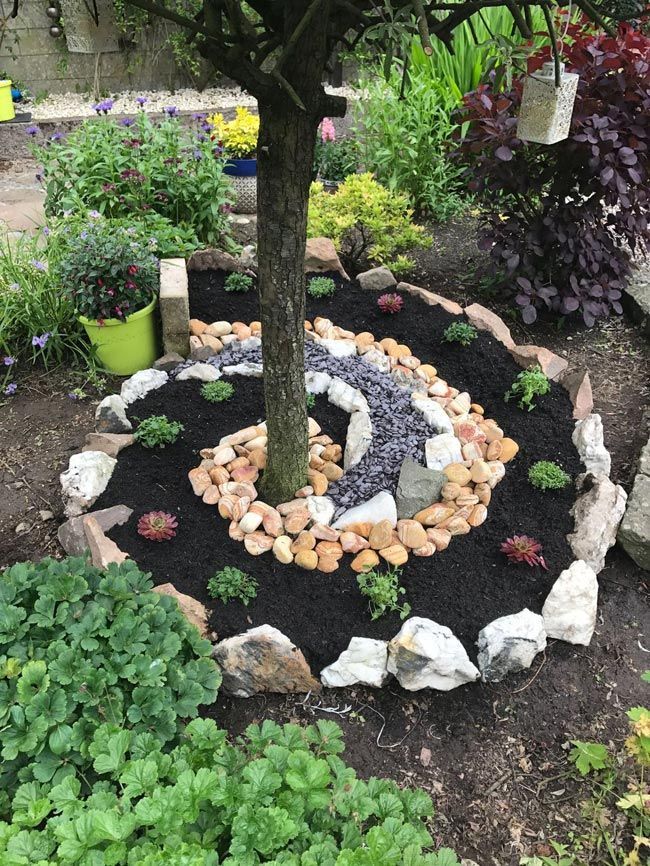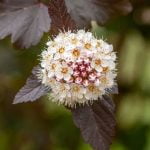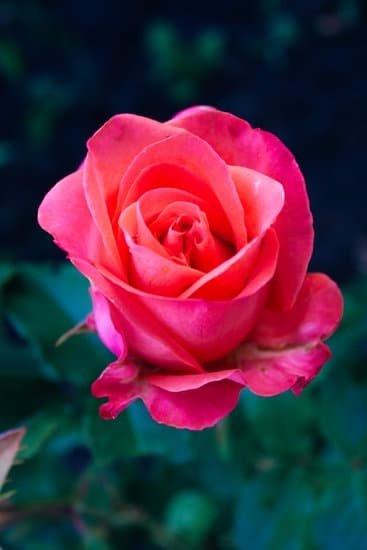Are you interested in small gardening ideas for home? Embracing the beauty and benefits of small-scale gardening at home can offer a multitude of rewards, from adding greenery to your living space to providing fresh produce for your meals.
In this article, we’ll explore various small gardening ideas that are perfect for homeowners with limited outdoor space or busy schedules. From container gardening and vertical gardening to indoor gardening and creative landscaping, there are plenty of options to infuse your home with nature’s beauty.
One of the key aspects of small-scale gardening is maximizing space with pots and planters. Container gardening allows you to cultivate a variety of plants, flowers, and herbs even in the smallest outdoor areas.
In addition, we’ll discuss how vertical gardening can help you make use of walls and fences to create a lush green environment in your home. We’ll also explore indoor gardening as a way to bring the outdoors inside, providing a touch of nature even in urban settings.
Furthermore, we’ll delve into edible gardening for those looking to grow fresh produce in their small spaces. From fruits and vegetables to aromatic herbs, we’ll provide tips on how to create an edible garden that suits your specific needs.
Additionally, we’ll look at creative landscaping ideas such as miniature gardens and fairy gardens as unique ways to incorporate greenery into your home. So whether you’re a busy homeowner or have limited outdoor space, there’s sure to be a small gardening idea that will perfectly suit your needs.
Container Gardening
One of the great benefits of container gardening is the ability to easily move your plants around to find the best spot for sunlight and water. This flexibility also allows you to rearrange your garden whenever you feel like changing things up. From vibrant flowers to fresh herbs, there are endless possibilities for what you can grow in containers.
When choosing pots and planters for your small gardening ideas for home, consider not only their aesthetic appeal but also their practicality. Look for containers that are lightweight yet durable, as well as ones with good drainage to ensure the health of your plants. Additionally, incorporating hanging baskets and vertical towers can help make the most of vertical space and add visual interest to your garden.
In addition to traditional pots and planters, consider getting creative with repurposed containers such as old buckets, tin cans, or wooden crates. Not only will this give your garden a unique and rustic charm, but it’s also an eco-friendly way to reduce waste. With container gardening, the possibilities are endless – no matter how small your space may be.
Vertical Gardening
Choosing the Right Plants
When it comes to vertical gardening, choosing the right plants is essential. Look for climbing plants such as ivy, wisteria, or climbing roses that can easily be trained to grow upwards. You can also opt for plants with trailing or hanging growth habits such as ferns, pothos, and spider plants. Additionally, consider incorporating herb gardens using a hanging planter system to add both beauty and functionality to your vertical garden.
DIY Vertical Garden Structures
Creating your own vertical garden structures is a fun and cost-effective way to personalize your green space. There are numerous DIY options, including pallet planters, hanging shoe organizers repurposed as plant holders, and even creating a living wall using recycled materials like old gutters or PVC pipe. These DIY projects not only allow you to customize the design of your vertical garden but also provide an opportunity for upcycling materials that might otherwise go to waste.
Maintenance Tips
While vertical gardens offer a unique way to add greenery to small spaces, they do require proper maintenance. Ensure that your plants receive sufficient sunlight and water regularly, especially during peak growing seasons. Regularly check for pests and diseases as these can quickly spread in densely planted areas like vertical gardens.
Additionally, prune your plants as needed to maintain their shape and prevent overgrowth. With proper care and attention, your vertical garden will thrive and bring joy to your small outdoor space.
Indoor Gardening
One popular indoor gardening option is to grow herbs, such as basil, parsley, and mint, in small pots on windowsills or countertops. These herbs not only add fragrance and greenery to indoor spaces but also provide fresh ingredients for cooking. Additionally, low-light houseplants like pothos, snake plants, and peace lilies are perfect for adding a touch of nature to rooms with minimal natural light.
Another creative way to incorporate indoor gardening is through terrariums and tabletop gardens. These miniature landscapes can be customized with succulents, air plants, and decorative elements such as pebbles and figurines. They are easy to maintain and add a whimsical touch to any room.
Additionally, hanging gardens are a trending indoor gardening idea. Utilizing wall-mounted planters or macramé hangers allows individuals to maximize vertical space while adding lush greenery to their living spaces.
Overall, indoor gardening provides numerous benefits including improved air quality, stress reduction, and aesthetic appeal. With the right small gardening tools and accessories, anyone can create a thriving indoor garden regardless of the size of their living space.
| Indoor Gardening Ideas | Description |
|---|---|
| Growing Herbs Indoors | Using small pots for herbs like basil and parsley on windowsills. |
| Terrariums and Tabletop Gardens | Creating miniature landscapes with succulents and decorative elements. |
| Hanging Gardens | Utilizing wall-mounted planters or macramé hangers for maximizing vertical space. |
Edible Gardening
One of the most rewarding aspects of small gardening at home is the ability to grow fresh produce even in limited spaces. With a bit of creativity and resourcefulness, it is possible to enjoy delicious, homegrown fruits and vegetables right from your own backyard or balcony. Below are some ideas for incorporating edible gardening into your small outdoor or indoor space:
- Herb garden: Even the smallest outdoor area can accommodate a container herb garden. Whether you have a balcony, patio, or window sill, you can grow herbs such as basil, rosemary, mint, and chives in pots or planters. These fresh herbs are perfect for seasoning and adding flavor to home-cooked meals.
- Vertical vegetable garden: Utilize vertical space by installing a trellis or vertical planter to grow climbing plants such as tomatoes, cucumbers, and beans. This allows you to maximize space while still enjoying a variety of fresh produce.
- Indoor hydroponic garden: For those with limited outdoor space, consider setting up a small hydroponic system indoors to grow lettuce, spinach, and other leafy greens. Hydroponic systems require minimal space and can be easily maintained indoors.
By incorporating these small gardening ideas for home, you can enjoy the satisfaction of growing your own fresh produce even in limited spaces. Whether you have a small yard, balcony, or indoor area, there are creative solutions for growing fruits, vegetables, and herbs at home.
Not only does edible gardening provide access to fresh and healthy produce, but it also allows you to connect with nature and experience the joy of cultivating your own food. Start small with a few containers or pots of your favorite fruits and vegetables, and gradually expand as you become more comfortable with edible gardening in smaller spaces.
Creative Landscaping
When space is limited, creating miniature gardens and fairy gardens can still provide a charming and whimsical touch to your outdoor area. These small gardening ideas for home are perfect for those who want to add a touch of creativity to their landscaping without taking up too much space. Here are some tips for incorporating these unique garden designs into your home.
- Choose the right containers: When creating a miniature or fairy garden, the container you choose is crucial. Consider using shallow, wide pots or even repurposed items like old drawers or baskets. This will help create the illusion of a larger space while providing ample room for your mini plants and accessories.
- Select themed accessories: Whether it’s a tiny bench, miniature animals, or even fairy houses, selecting themed accessories will bring your miniature garden to life. Look for items that match the style you’re going for, whether it’s a whimsical fairy garden or a serene Japanese Zen garden.
- Plan your layout: Before diving into creating your miniature garden, take some time to plan out the layout. Consider the placement of each plant and accessory to ensure a balanced and visually appealing design. You can also experiment with different levels by adding rocks or small hills to create depth in your mini landscape.
Incorporating miniature gardens and fairy gardens into your small outdoor space can add an element of enchantment and creativity. By carefully selecting containers, themed accessories, and planning out the layout, you can create a delightful mini oasis that brings joy to both you and your visitors.
Low-Maintenance Gardening
For many busy homeowners, the idea of maintaining a garden may seem overwhelming. However, there are several low-maintenance gardening ideas that can make it easier to enjoy the benefits of gardening without requiring a significant time commitment. One approach is to choose plants that are resilient and require minimal care, such as succulents, cacti, and native plants. These plants are well-suited to small spaces and can thrive with minimal watering and attention.
Another low-maintenance gardening tip for busy homeowners is to use mulch in garden beds and containers. Mulch helps retain moisture in the soil, reduces weed growth, and adds nutrients as it breaks down over time. This can significantly decrease the need for regular watering and weeding, making it an ideal solution for those with limited time to invest in gardening.
Furthermore, incorporating self-watering systems or drip irrigation can help automate the watering process, reducing the need for daily maintenance. These systems ensure that plants receive consistent moisture without the homeowner needing to manually water them every day. Additionally, choosing perennial plants that come back year after year can cut down on the need for replanting and reseeding each season.
| Low-Maintenance Gardening Tips | Benefits |
|---|---|
| Choose resilient plants | Requires minimal care and watering |
| Use mulch | Retains moisture, reduces weeds, and adds nutrients |
| Incorporate self-watering systems or drip irrigation | Automates watering process |
Small Gardening Tools and Accessories
Small gardens may limit the type and size of gardening tools and accessories that can be used. However, embracing small-scale gardening at home doesn’t mean sacrificing functionality and style. With the right tools and accessories, even the smallest of spaces can become a lush and beautiful garden.
Compact Tools
When space is limited, it’s important to invest in compact gardening tools that can easily be stored in small sheds or even indoors. Look for mini pruners, folding shovels, and telescopic hand trowels that can perform the same tasks as their larger counterparts without taking up too much space.
Vertical Garden Structures
Incorporating vertical elements into a small garden not only maximizes space but also provides opportunities for adding visual interest. Vertical garden structures like trellises, hanging planters, and wall-mounted grow bags are excellent for growing climbing plants such as tomatoes, beans, or cucumbers. These structures take up minimal ground space while allowing plants to expand upwards.
Creative Planters and Pots
Utilizing creative planters and pots is one of the small gardening ideas for home that truly make a difference in limited spaces. Look for hanging planters that can be suspended from ceilings or balconies, window boxes to add greenery to windowsills, or tiered plant stands to create vertical effects. Additionally, repurposing items like old teacups, mason jars, or wooden crates as plant containers adds personality and charm to small gardens while maximizing available space.
Conclusion
In conclusion, small gardening at home offers a plethora of benefits that make it an attractive and practical option for individuals with limited outdoor space. Whether it’s through container gardening, vertical gardening, indoor gardening, or edible gardening, there are numerous ways to bring the beauty of nature into even the smallest of spaces. By utilizing creative landscaping and low-maintenance gardening techniques, homeowners can create stunning green oases that require minimal upkeep.
Embracing small gardening ideas for home also provides a wonderful opportunity for homeowners to connect with nature and experience the joys of growing their own fresh produce or cultivating beautiful greenery indoors. With the right tools and accessories designed for small-scale gardening, individuals can maximize their limited space and create stunning natural displays that enhance the aesthetic appeal of their homes.
Ultimately, regardless of how much space one has available, there are countless ways to incorporate small-scale gardening into one’s home. The benefits go beyond simply adding visual appeal; they include mental and physical health advantages as well. Through embracing small-scale gardening at home, individuals can enjoy the beauty of nature and all its associated benefits in any living environment.
Frequently Asked Questions
How Do I Design a Small Garden Idea?
Designing a small garden requires careful planning and maximizing space. Consider using vertical gardening techniques, such as trellises or hanging planters, to make the most of limited area. Choose plants that are suitable for small spaces and don’t overcrowd the area.
What Vegetable Gardens Grow in Small Spaces?
Many vegetables are suitable for growing in small spaces. Some popular options include cherry tomatoes, peppers, lettuce, green onions, and herbs like basil and parsley. These plants can thrive in containers or raised beds, making them ideal for small gardens.
What Is the Best Small Garden?
The best small garden is one that suits your personal preferences and needs. Consider factors such as available space, sunlight exposure, and your gardening goals when choosing the right plants and design elements. Ultimately, the best small garden is one that brings you joy and fulfillment.

Welcome to my gardening blog! I am passionate about plants and enjoy sharing my knowledge and experiences with others. In this blog, I will write about everything related to gardening, from tips on how to get started to updates on my own garden projects.





